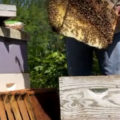Researching my family history was at first very casual and something I thought would be fun to try. There were frustrating periods because I didn’t have a lot of information to make connections and verify things. Also, the sites that you would have to pay for to get certain information were annoying. I eventually did pay Ancestry.com for a period of time, but ultimately found I got all the information from them that I was going to get. So now what?
I’ve found there are many other ways to get information and verify facts. Talking to people on the Internet, visiting local libraries, the courthouse, graveyards and this is not all. If you really want the information, just know that it is somewhere to be had (in most cases) Finding it will be your journey. You only need desire… and a few pointers.
I was able to unfold a story so amazing it kept my attention like a good book that you can’t put down. The best part is that my family members are the stars! Take for example, Arthur E. Morgan who was practically FDR’s right-hand man during the TVA project.
We have a goldmine in our lineage and here is the reason for this post. Here is some information that I hope you find useful to get started doing your own family research.
1. Stay organized
Keep your genealogy information organized from the very beginning. Have a place ready to store your genealogy information that you are going to receive. Here are some options to help you stay organized:
- Use a a big plastic or metal storage container to protect your information you gather. This would help protect your precious information from water damage or any other outside forces. Example, a child or an animal could harm your valuable family tree findings.
- Use a family tree software, to store your family tree information, and make back-ups!
- Place documents and old family records inside page protectors and insert them in a binder. Have a different binder for each line. If you decide to use a binder, get a large one. This way you won’t run out of room as fast.
- Keeping family records inside binders is very useful, because it makes it easier to share with others. If you are going to a family gathering and want to share things that you have found out about the family, all you have to do is grab your binder when you head out the door. It’s not very easy to tote your computer around and you certainly don’t want to figure out what you will take on the way out the door!
- Use two accordion folders. One for your mother’s side, and one for your father’s side. Label each compartment with different surnames. File all notes that have been entered into your tree. When you are questioned about piece of information already entered, you are able to retrieve it.
2. Ask any living relatives that you know for their information
Have questions ready. When a person is asked a specific question, you get better results. If you just say, “Tell me more about my family,” they won’t know what specific thing to think about. Sometimes people’s memories need to be encouraged a little before they can really start to recall the past. Then, watch out, it’ll just start flowing. Every little details counts! Sometimes, I take a video camera so it’s all on tape. Those little details could confirm some facts for you later.
Also, don’t put off asking your questions, thinking someone will always be around. Unfortunately, a lot of information is lost when someone dies. Older people are often very useful in identifying old family photos. Every genealogist probably has a stack of old unmarked photos.
3. Send letters to family asking your questions
If you have access to a computer, send an email. Email is much quicker and my preferred way to work. It helps when people have time to sit and think about the questions before responding and they can respond at their convenience. Expect to follow up.
4. Send letters to or visit local libraries where family members lived
Most libraries have an archive section. Some librarians and historians at the library can be very useful and willing to help. When you identify one, pick their brain and you will be surprised! Some things that can be found at the library include: family research already done on your family, old maps, old books, local baptisms listings, marriage listings, death listings, and burial information. You never know what you could find, so it’s worth a visit or writing a letter.
5. Send letters to churches where family members attended
Some churches are more than willing to help and do it for a small donation, or in my experience, free. Information found at a church could include: marriage, death, baptism, and burial. Some church records can be found on a county’s web site, a lot of genealogists have put church records online.
6. Send a letter to an old place of employment of a family member
For example, we have a grandfather that was a teacher and taught for many years. The alumni association at his school went through all the yearbooks for the years he taught at the school and copied the information they found on him. They did this for free and all I did was ask. Although, a small donation is always appreciated.
7. Always remember to back up your work
Computer disks and photo copies are always useful, in case something should happen to this treasured information.
8. Keep your information in a safe place
A basement wouldn’t be the best choice. Moisture or water from a leaking basement could damage old photos, books, or documents. I keep mine in a closet and assessable.
9. Leave directions of what you would like happen to all your research and old photos
When you die, will this info die with you? Try to find a family member that would preserve it and pass it down to other generations! This is extremely important. If you don’t have anyone to pass it on to, consider leaving it to the local historical society or the local library where your ancestors once lived.
10. Refer to the Internet
The Internet is a great source to refer to when doing family tree research. You will be amazed at what type of Information you will find posted on the Internet. Check out these Genealogy sites.
11. Mailing lists on the Internet are great tools for collaboration with other genealogists
Most genealogists love helping other genealogists. To me it’s like finding a new jig-saw puzzle that needs help being pieced back together. Mailing lists are made up of groups of people who all have joined together to research the same region or name. When you send out an email to the group everyone receives it. Many have access to databases and books. When you send out an email asking for help, usually you will get a good response. Signing up on a mailing list is very easy. Search Google or any other search engine by typing in “mailing list” and “the topic” you would like to research. For example, I belong to the Dearborn County, Indiana mailing list. I would simply search for a “Dearborn county mailing list.”
12. Call the courthouse
When looking for a particular record, call the local courthouse where your record should be on file. They will tell you how to address your request, the processing fee, and the information required for the search.
I’ll update this post as I discover more ways, and I wish you the best of luck in your search to *really* know who you are.
Susan




Leave a Reply